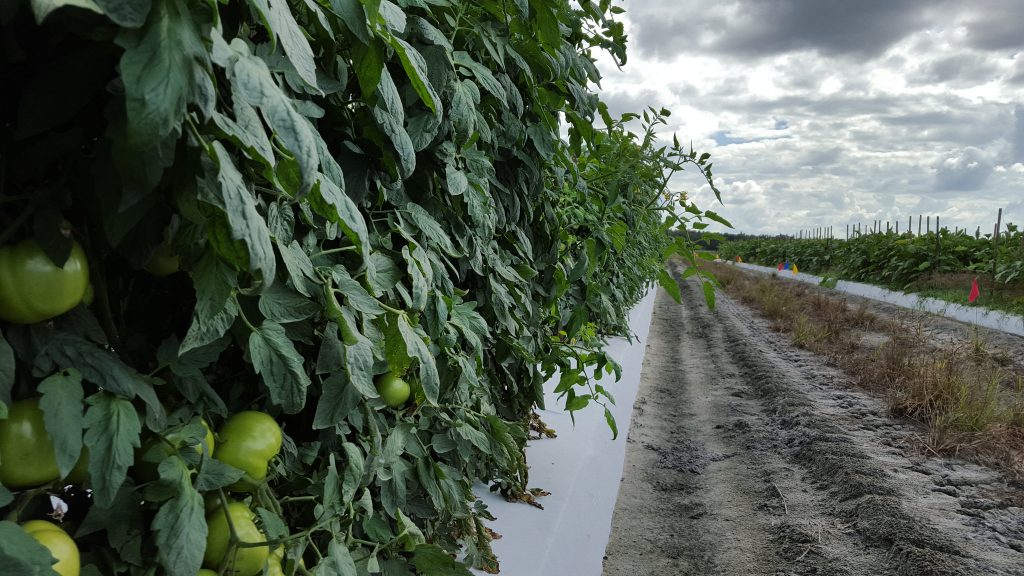
Purple nutsedge can be a tough nut to crack for many tomato growers. Nathan Boyd, weed scientist at the University of Florida’s Gulf Coast Research and Education Center (GCREC), recently completed herbicide trials examining whether pre-emergent or post-emergent herbicides work better in controlling purple nutsedge in tomatoes. The trials took place at the GCREC in Wimauma.
Purple nutsedge can be detrimental to tomato crops and difficult to control. The nutsedge can puncture through the plastic and cause serious problems for the crop. Nutsedge can compete with tomatoes for natural resources. Furthermore, once the nutsedge punctures the plastic, it can be difficult to remove that plastic, causing increased labor costs for growers. Nutsedge can also spread rapidly, making it even harder to manage. “Using only fumigation doesn’t always cut it,” Boyd explained.
TRIAL RESULTS
Boyd had four trial
plots, one with a pre-emergent herbicide, one with a post-emergent herbicide
and two with a combination of both. Pre-emergent herbicides are applied under
the plastic to control weeds before they go through the plastic.
On the first plot, Boyd used Spartan, a pre-emergent herbicide, at 6 ounces per acre. He noticed that although the nutsedge thinned, it was not suppressed. There were still quite a few nutsedge that pierced the plastic.
The second plot examined Sandea, a post-emergent herbicide, applied at 1 ounce per acre right at the base of the plant. Post-emergent herbicides are applied after the weeds have emerged and opened. Boyd said some nutsedge survived the application, so there was not total control.
The third plot combined a pre-emergent herbicide and post-emergent herbicide: Spartan at 6 ounces per acre and Sandea at 1 ounce per acre. Ideally, the pre-emergent herbicide will suppress the nutsedge under the plastic, then the post-emergent herbicide will control any nutsedge that has broken through. While some nutsedge still survived, the control from the combination was visibly better than the first two trials. “(There was) really good control along the entire plot,” Boyd said.
The fourth plot featured another combination, but with a different pre-emergent herbicide: Dual Magnum applied at 21.28 ounces per acre, which was combined with Sandea at 1 ounce per acre. This combination provided excellent control, showing very little nutsedge across the whole plot.
COMBINE FOR CONTROL
Overall, Boyd advises growers to use a combination of both products to get the best control. “The message I want to get across with this is that a combination of a pre-emergent herbicide followed by a post-emergent herbicide is able to get you season-long control, while one product or the other may not,” Boyd concluded.
This article was featured in the July issue of VSCNews magazine. To receive future issues of VSCNews magazine, click here.
Share this Post









